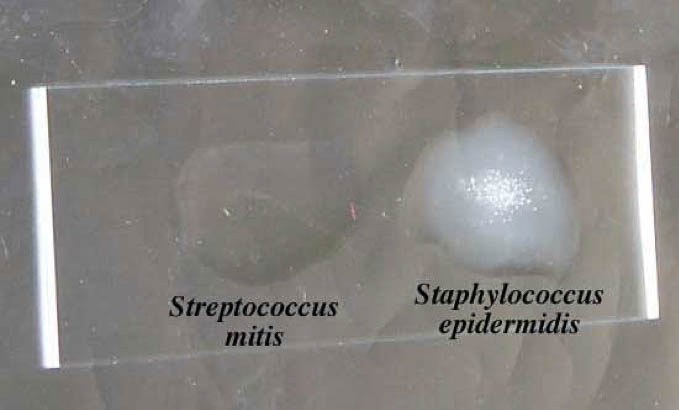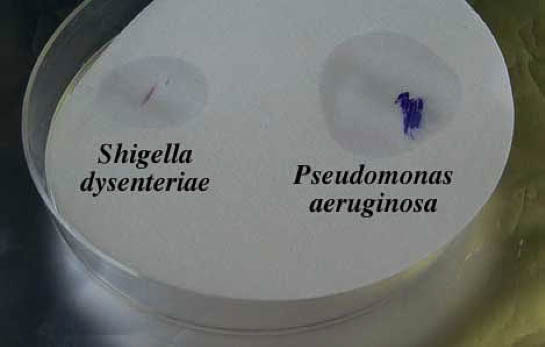Today you will finish up testing for both gram positive and gram negative organisms. There are few tests that can be read immediately that we call rapid tests. These are often useful initial steps to identifying bacteria. They often further divide bacteria into groups.
Catalase Test
The catalase test is a particularly important test used to determine whether a gram-positive cocci is a staphylococci or a streptococci. Catalase is an enzyme that converts hydrogen peroxide to water and oxygen gas. The test is easy to perform; bacteria are simply mixed with H2O2. If bubbles appear (due to the production of oxygen gas) the bacteria are catalase positive. If no bubbles appear, the bacteria are catalase negative. Staphylococcus and Micrococcus spp. are catalase positive, whereas Streptococcus and Enterococcus spp. are catalase negative.
Procedure
Results

Oxidase Test
This test is used to identify microorganisms containing the enzyme cytochrome oxidase (important in the electron transport chain). It is commonly used to distinguish between oxidase negative Enterobacteriaceae and oxidase positive Pseudomadaceae.
Cytochrome oxidase transfers electrons from the electron transport chain to oxygen (the final electron acceptor) and reduces it to water. In the oxidase test, artificial electron donors and acceptors are provided. When the electron donor is oxidized by cytochrome oxidase it turns a dark purple. This is considered a positive result. In the picture below the organism on the right (Pseudomonas aeruginosa) is oxidase positive.
Procedure
When performing the oxidase test on a bacterium, it is important to setup the assay with rapid and clear visualization as a goal. Ensure that you can see the colonies and look at the results immediately.
1. With a sterile swab, touch a plate of Escherichia coli at an area with a large colony or dense growth. Make certain the growth is visible on the swab. If the growth is not visible, it is very difficult to interpret the test results.
2. Place 2-3 drops of oxidase reagent onto the visible culture on the swab. If the culture smear turns purple, the organism is oxidase-positive. If the smear remains colorless, the organism is oxidase-negative.
3. Repeat with Pseudomonas aeruginosa.
Results

